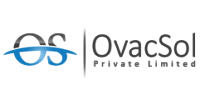Why Your Business Needs an HRMS System Now
It is evident that human resource management alike other business resources is even more paramount when one takes into consideration today’s competitive economics. The different stages from employment and personnel control to employees’ remuneration and legal issues constitute a considerable workload on the company, especially in its evolving stage. It is here that a Human Resource Management System (HRMS) will prove to be a real differentiator.
If you have not transitioned from manual processes or spreadsheets, even to this day, then you need to think again. It is undoubtedly true that the usage of an HRMS system simple as it is streamlines a range of HR procedures, increases the accuracy of information and at the end fosters the growth of the organization. Thus, in this article, it shall be looked at why your business requires an HRMS system at this point in time, and how it will resolve common human resource issues.
What is an HRMS System?
HRMS (Human Resource Management System), in other words, the all in one software solution that automates, integrates, and optimizes various functions around human resources. It integrates several human resource systems like employee record management, time and attendance management, payroll, benefits management, head-hunting, performance tracking, and adherence to legal norms. HRMS is like an operating system enabling one touch applications to carry out all the tasks related to employees and their functions targeting the growth of the business.

Why adopting an HRMS system boosts business efficiency.
Reduce the Strain of Excessive Administrative Work
Administrative work does not directly create value for business and often involves activities like keeping the records, time keeping, and as simple as calculating payrolls. These activities are rather monotonous, tedious, difficult to manage, and more so when dealing with large nature of business.An HRMS simplifies and automates tasks like attendance and payroll. It tracks attendance, syncs with time systems, and issues paychecks without errors, eliminating the need for manual hour tracking. In turn, this saves time and prevents mistakes.
In addition to that, most of the HRMS systems have modules wherein employees can resolve most of the issues by themselves such as, modifying personal details, applying leaves or checking pay slips and hence need not bother the HR team members much.
Spi,94054 and Legal Penalties
Just like finance and administration tasks, handling humans in human resources can be a daunting task with increased chances of errors being made. Errors are much common in calculations involving multiple complex processes like pay and benefits. One error can impact many, causing employee dissatisfaction and potential legal penalties.
HRMS systems automate these processes, minimizing human interference and error. Payroll systems in HRMS platforms follow tax laws and accounting rules. Tax law updates are automatic, keeping your company compliant without burdening HR personnel.
An HRMS keeps employee records organized, minimizing disruptions and inefficient recording.
Improve Employee Experience
With most industries being competitive today, employees look for easy and quick experiences in tasks that need HR engagement. Employees dislike delays in onboarding, waiting for evaluations, or being unable to access training.
HRMS systems enhance the employee experience by offering self-service tools that simplify onboarding and benefits management. Employees can check their payslips, apply for absence, or even complete courses on the payroll system.
Data-Driven Decisions – Analyze this and Gain Competitive Advantage
There are many benefits that come with the advantage of using an HRMS system which is collecting useful information or data and analyzing it. Work management system information focuses on several key metrics such as performance indicators, staff turnovers, absentism levels, and training needs.
Such a strategy assists HR and managers in decision making. For example, if an organization faces high turnover, it must assess causes such as strategies and the work environment. Performance management data can also help create development plans, boosting productivity and engagement.
Saving Time in Recruitment and Management of Talent
Recruitment and retention can be challenging, but an HRMS system simplifies the process. It allows you to develop and publish job listings, screen applicants, and schedule interviews in one place.
Humans are not machines but HRMS let us upset this old cliché. They are able to assume a degree of managerial control over an employee’s career progression. Continuous improvement is supported by HRMS systems through such engagement dimensions as training and performance management.
Remove compliance headaches:
constantly changing labor laws, the complexity of tax regulations, and compliance with legal obligations is a difficult task.
Hashtag, avoid the rush. For example, HRMS systems help users maintain compliance with the Fair Labor Standards Act (FLSA), OSHA, and GDPR by summarizing business operations. The internal system updates or synchronizes automatically, so business owners don’t need to focus on internal legislative changes.
Beef up the use of reporting and analytics in day to day HR routines:
Reports and report generation was one of the many responsibilities that made HR very monotonous and tiresome. However, today, HRMS and similar tools ease these complexities while offering better, cost-effective solutions. With the click of a button, users can instantly generate any type of report, from employee performance to payroll expenses to hiring reports.
These reports are not just accurate but they report that which the user requires. With the analytical aspect of your HRMS, you will be able to uncover trends, manage KPIs, and make evidence-based decisions that add value to your organization.
For Expanding Businesses, Scalability Is Important
As the business expands, the HR processes involved also become more complicated. Managing a few employees is a completely different process than managing a broad and potentially global workforce. There are more administrative tasks to handle, as well as regularity and compliance issues.
Since an HRMS solution is quite flexible, it can adapt as your business expands. No matters what your organization’s goals are-whether it is to grow in the headcount, grow in geographies, grow in the choices of the benefits-it is up to your HRMS. This modularity guarantees that you will not suffer from inadequate functionality of your HR system.
Investment Recuperation as a Longterm Benefit
It is true that there is a cost that is there when introducing the HRMS system but the benefit to cost ratio is better with time. Advanced systems handle routine HR activities, eliminating the need for costly manual labor to manage numbers and engage employees. The system addresses supply chain risks and inefficiencies, saving the business money over time.
When adopted well, HRMS boosts staff loyalty, reducing recruitment and training costs. By offering better HR service, employees are more likely to stay, eliminating replacement costs.
Frequently Asked Questions (FAQs)
How much time is required in the integration of an HRMS system?
The time needed to deploy an HRMS system will differ depending on the scale of your firm and the level of the complexity of the specific software selected. The time required can take several weeks to many months to complete the installation and link the HRMS system. Recent systems are build on ease of use and high degree of assistance during the process of implementation.
In what way is HRMS something that can be used in my business?
Many HRMS systems are highly loyal to users and can be configured to serve the specific purpose of the business environment. Custom report generation, workflow, and other software tools integration are some examples of how the system can be modified. Do not forget to look for an HRMS Provider that allows you room for flexible customization of the product.
And is HRMS system going to be safe?
Of course, trusted HRMS systems come with exceptional security features including encryption, secure data storage, and access control management systems around users. These systems’ specifications meet the required standards of any given industry’s data protection of employee information.
What are the expenses I should expect to incur in an HRMS system?
An HRMS system cost estimate will always be dependent on the size of business, number of users, and required features. Some HRMS systems use the subscription billing but charge on the number of employees while others charge once for the license to use the software. Comparison in terms of features is healthy for picking one that falls within the budget as well as the requirements of the business.




